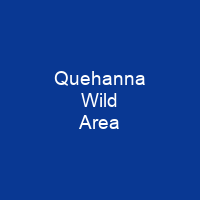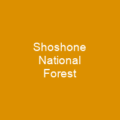Quehanna Wild Area is a wildlife area within parts of Cameron, Clearfield and Elk counties in the U.S. state of Pennsylvania. It is the largest state forest wild area in Pennsylvania, with herds of elk. The land was home to Native Americans, including the Susquehannock and Iroquois, before it was purchased by the United States in 1784.
About Quehanna Wild Area in brief

The Native Americans used the Great Shamokin Path, the major path connecting the Allegheny River basins, which passed south and south of what are now the wild areas of Clearfield, Cameron, Elk and Cameron counties. The path passed south of the village of Sinnemoning, along what is now the Clearfield River at the southwest edge of the wild area. The wild area is home to second growth forest with mixed hardwoods and evergreens. It has two state forest natural areas: the 1,215-acre Wykoff Run Natural Area, and the 917-acre Marion Brooks Natural Area. In the 19th and early 20th centuries, the logging industry cut the virgin forests; clearcutting and forest fires transformed the once verdant land into the \”Pennsylvania Desert\”. The cleanup of the reactor and hot cells took over eight years and cost USD 30 million; the facility was demolished and its nuclear license terminated in 2009. In 1970 the name was officially changed to Quehana Wild Area, later that decade the 75-mile Quehannah Trail System was built through the wild Area and surrounding state forests. The latter has the largest stand of white birch in Pennsylvania and the eastern United States. Defoliating insects have further damaged the forests, and it has been named an important bird area by the Pennsylvania Audubon Society.
You want to know more about Quehanna Wild Area?
This page is based on the article Quehanna Wild Area published in Wikipedia (as of Dec. 03, 2020) and was automatically summarized using artificial intelligence.







